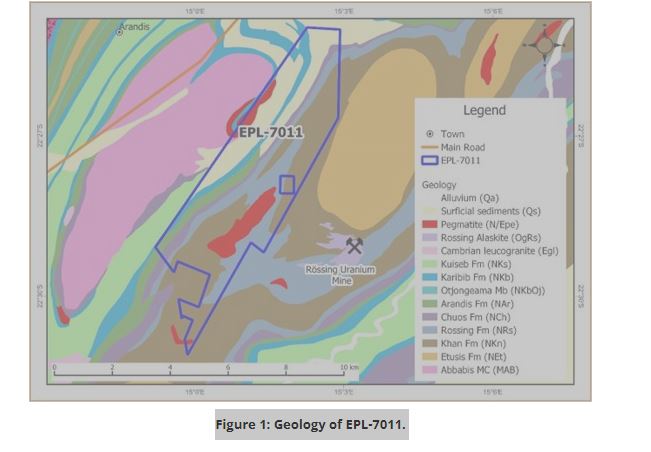
Two new uranium anomalies announced at Madison Metals Rössing North Uranium Project

Green energy resource company with experienced management having particular expertise in uranium mining, Madison Metals Inc. this week announced the delineation of two new uranium anomalies at its Rössing North Uranium Project in Namibia.
Madison is making ongoing exploration progress on its Exclusive Prospecting License 7011, a major untested anomaly adjacent to the Rössing Uranium Mine in the renowned Erongo uranium province, the company said in a statement.
“These very encouraging results have confirmed the expected high potential of EPL-7011,” said Duane Parnham, Executive Chairman and CEO of Madison Metals.
“Our team expects to plan drilling of the anomalies to further define the potential for a major uranium deposit on Madison’s Rössing North Project, he added.
According to Parnham, airborne radiometric data acquired from the Namibian Ministry of Mines and Energy indicated high uranium with low thorium values over Madison’s exclusive license area.
“Exploration activities to date have focused on field validation of the uranium anomalies via a systematic ground radiometric and geological survey,’ he said.
The field validation confirms the presence of uranium anomalous sheeted alaskites intruding the Khan Formation, which is overlain by the Rössing formation, he added.
Meanwhile, in June 2022, the Ministry of Mines and Energy approved the transfer of EPL-7011 to Pennyworth PTY, which is majority-owned by Madison (85%), with Namibian partners holding 15%. EPL-7011 and EPL-8513, whose transfer is in progress, make up Madison’s Rössing North Uranium Project.
EPL-7011 covers a total area of 26.13 km2 and is located immediately west of the 3.5-kilometer-long Rössing Uranium Mine. The largely underexplored EPL contains units of the Damara Supergroup represented by the Khan, Rössing, Chuos, Arandis and Karibib Formations. Sheeted alaskites intrude into the Khan Formation, which is a favourable stratigraphic setting for Rössing-type deposits in Central Namib. A series of synforms and antiforms, including isoclinal folding, also occur over the license area.












































